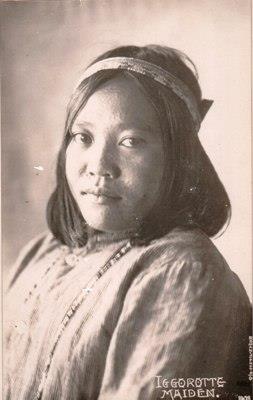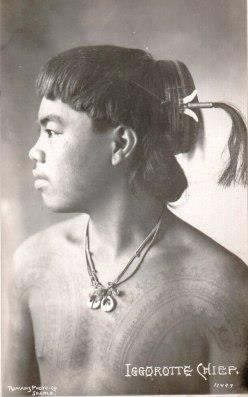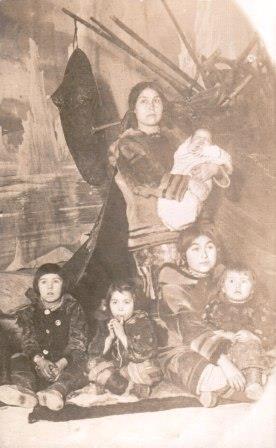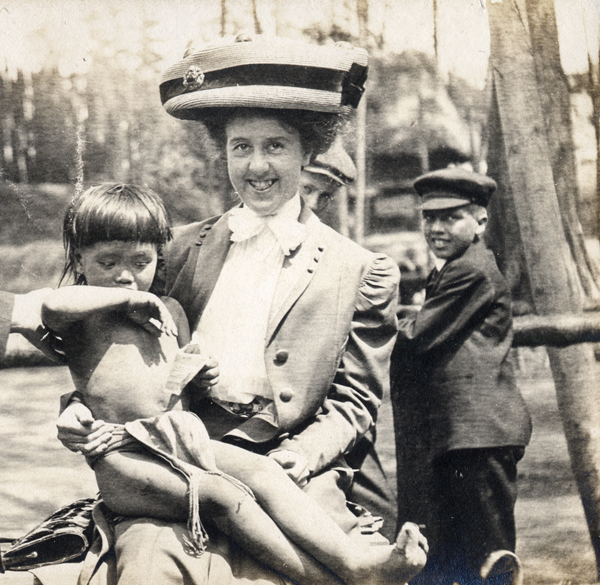Alaska-Yukon-Pacific Exposition - Images of the Fair
Native Peoples at the AYPE
Native Peoples in living displays is one of the difficult subjects of early American expositions. Obvious indignities aside, in some situations they were treated cruelly, inhumanely, outrageously, shamefully. The AYPE represents a maturing of this feature, and they were a very visible, an interconnected part of the AYPE. As we will attempt to show, a mutual fascination existed between performers and visitors; simple reductionist views and denigrations simply do not hold up. It is also important to note that they arise out of a World's Fair tradition that includes European folk, rural, and older cultural performances. They were an important part of the certification of the fair itself, simply because other fairs had them; the demand to see their performances was high. Any controversy over them tended towards protection of the visitors, but their display was not only otherwise generally acceptable but helped to establish the educational credentials of the Pay Streak. As with many aspects of the fair, what would seem a glaring inconsistency today did not pose a conflict. This was part of the "Reality Television" of its time - imagine what Edwardian observers would think of some of today's entertainment fare. And at the AYPE, there was not the tragic and overt abuse that attended some earlier fairs and displays. Although the Igorrote group that came to the AYPE would eventually suffer tragedy in the throes of World War One, in 1909 that was part of an unimaginable future that would end the innocences of the post-Victorian age forever.
Depending on the group's background - some groups were professional performers showing a limited, choreographed view of a national culture, some families had been participating in this country for a generation, some were newly arrived - reaction between the fairgoers and the Native Peoples seems to have been as much one of mutual curiosity and tolerance as anything else. Images exist of well-dressed, middle-aged, matron-visitors chatting casually face to face with Igorrote warriors. That the fairgoers viewed the Native Peoples with paternalism there can be no doubt. In viewing the active displays of craft production, domestic life, dance, clothing and war making did the fairgoers learn anything? Let us hope so. Did this encourage eugenics, imperialism, separate-but-equal legislation, immigration quotas? We might wish to hope not. Just how well each group was treated or profited from the experience is difficult to determine. Much research has, and continues to be done, on this complex topic. Ref


These two sensitive portraits of Igorrotes, (note that spellings vary widely) were photographed by Asahel Curtis in 1905 when these individuals first entertained in Seattle under the notorious, criminal purveyor Truman Hunt. (see The Lost Tribes of Coney Island). However their experiences, which greatly worsened after starting in Seattle did not discourage them from returning under Richard Schneidewind, who had from the beginning treated his performers much better. These images, published as part of the Romans studio AYPE offerings, show a respectful relationship to the Philippine Natives. However, it is worth noting that Romans also published a sensationalist AYPE view of the Igorotes roasting dogs on open spits.
The right image was taken inside the AYPE Igorrote venue and is typical of candid photography from visitors' albums. The dress of the boy to the right is also especially interesting.
Several points regarding the Igorrotes are important. Americans' perceptions of the Philippines had already been built for a decade through the media. This was not the only representation of the Philippines at the AYPE, which also had a large government building showing industry and culture of more urbanized and mechanized groups and areas. Additionally, it is quite possible that Igorrotes, known to have particpated in the Phillipine Constabulary, participated in the very famous "Taft's Own" Philippine Constabulary Band. This was a very highly skilled concert ensemble, including strings, led by an African Amercian conductor, which gave regular concerts during the week of Taft's visit and helped to put on American Composers' Day. (more in the Music pages).
Additional Igorrote views


Nancy Columbia, best known as "Miss Columbia", is the sixteen year old seated on the floor of the left image.(unattributed). She was born at the 1893 World's Columbian exposition and educated in American schools, but is pictured here in a native setting. She had a warm personality and the public took her to its heart; she was voted the most popular performer on the Pay Streak. Nurtured by her show-business savvy Labradoran mother and mentored by a Chicago socialite, she would eventually star in Hollywood movies.
In the right-hand image (O.T. Frasch), Nancy Columbia is situated in a place of honor, dressed as a normal fairgoer (she is wearing a small crown as the "Pay Streak Queen") and is in the company of society women.






